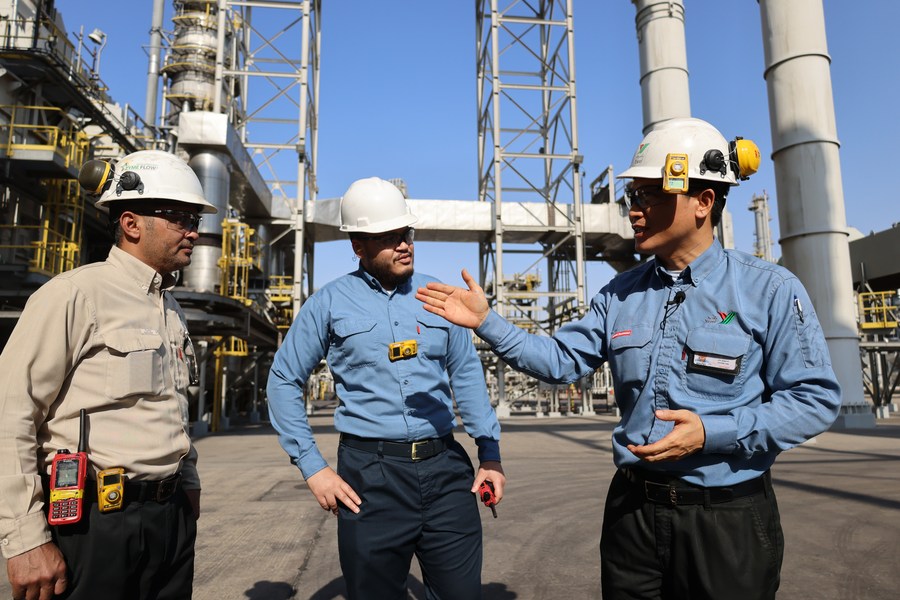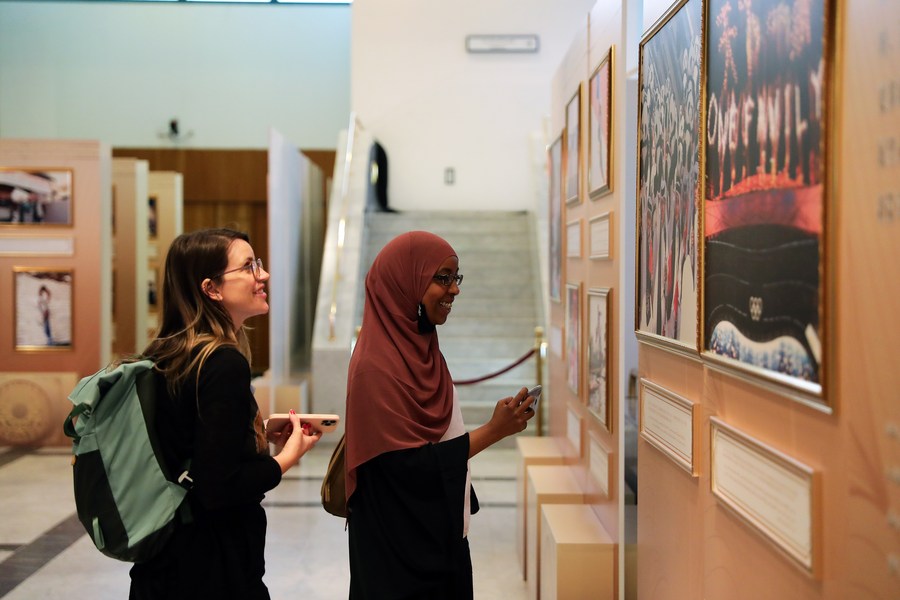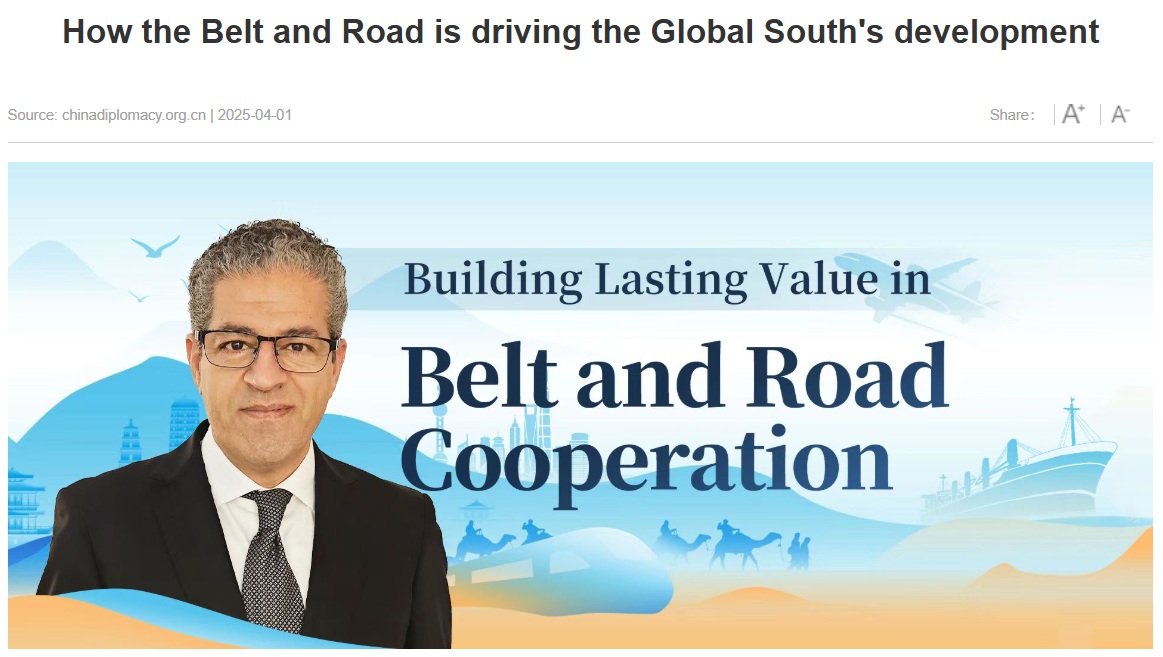By Hussein Askary*
This article is published courtesy of China Diplomacy
The Belt and Road Initiative is now driving a broader economic and social transformation, empowering nations in the Global South to industrialize and modernize in coordination with China.
As the Belt and Road Initiative (BRI) enters its second decade, it is undergoing a significant transformation from a focus on large-scale infrastructure projects to broader economic and social development. This progress could propel nations of the Global South into a new economic and social era. By “empowering” rather than simply “helping” these countries, China is sharing its high-quality development achievements through technology transfer across Asia, Africa and South America.
Many nations of the Global South, once limited to exporting raw materials and importing manufactured goods in the post-colonial era, are now embracing industrialization and modernization. China’s role is essential in this process, potentially sparking positive competition among industrial powers to expand global supply chains.
Initially, the BRI focused on large-scale infrastructure projects related to transportation, power, water and telecommunications. Now, a new trend is emerging: industrial zones and parks are sprouting up across BRI countries. Industrial growth in Southeast Asia is well-documented, with projects such as the China-Laos, Jakarta-Bandung, Thailand’s high-speed rail and China-Vietnam rail initiatives. Less visibly, similar growth is happening in the Middle East. Despite ongoing regional conflicts dominating the news broadcasts, countries like Saudi Arabia, Egypt, Oman and the UAE are launching many industrial and technological projects.
Saudi Crown Prince Mohammed bin Salman has consistently highlighted the alignment between the BRI and Saudi Vision 2030, noting their shared features.
In 2023, following Chinese President Xi Jinping’s visit to Riyadh, corporations from both countries announced $30 billion in investments. These included projects for electric vehicle production, renewable energy, cloud computing, information technology, petrochemical industries and infrastructure development in Saudi Arabia. The Saudi Public Investment Fund (PIF), the country’s largest sovereign wealth fund, has also been backing several key initiatives. In 2023, the Saudi Ministry of Investment signed a $5.6 billion deal with Chinese electric car maker Human Horizons to manufacture and sell vehicles in the kingdom. Additionally, earlier this year, Chinese computer maker Lenovo and Saudi Alat Electronics signed a $2 billion agreement to build a manufacturing plant in Saudi Arabia.

Workers communicate at the Yanbu Aramco Sinopec Refining Company (YASREF) in Yanbu, Saudi Arabia, Nov. 27, 2022. [Photo by Wang Haizhou/Xinhua]
Construction began in the Riyadh Special Integrated Logistics Zone, with plans to produce millions of “Saudi Made” laptops, desktops and servers in a facility designed and built to high sustainability standards, as stated in a press release by Lenovo. This joint venture was financed by the PIF through dedicated bonds issued by Lenovo.
Saudi Arabia’s Vision 2030 aims to diversify the kingdom’s economy, reducing its reliance on oil exports as the sole source of income. The economy was severely impacted during the past decade when oil prices plummeted to nearly $30 per barrel in 2014-2016 and again in 2021. By partnering with China and other nations, Saudi Arabia seeks to avoid similar shocks by becoming an industrial power and logistics hub under the BRI, connecting Asia, Africa and Europe.
Egypt is another country in the region intensifying its cooperation with China under the BRI to industrialize and modernize its economy. Since the completion of the New Suez Canal and the Suez Canal Economic Zone in 2015, Chinese companies have been at the forefront of creating new investment opportunities in this strategically positioned country along the Maritime Silk Road. The China-Egypt TEDA Suez Economic and Trade Cooperation Zone (TEDA) is a prime example of how the BRI connects markets and supply chains across three continents. Located on the shores of the Red Sea, TEDA was carved out of the desert and has attracted over 160 companies, producing a wide range of consumer and manufactured goods while providing more than 70,000 jobs to the local workforce. As Ain Sokhna grows in size and importance, a new port is under construction in collaboration with Chinese companies, along with a new high-speed railway connecting it to the rest of the country.
The localization of Chinese technology and supply chains in Egypt through the BRI is exemplified by Haier, a leading Chinese home appliance manufacturer. Last year, Haier boosted its investment in Egypt to $168 million. This expansion will yield an initial annual production capacity of about one million home appliances, primarily air conditioners. Approximately 70% of the output will cater to the local market, while 30% is slated for export, according to Haier’s Egyptian general manager. Highlighting the importance of leveraging local resources, Haier aims to increase the local content in its products to 70% by 2025 and 80% by 2026.
Thanks to the BRI, nations in the Global South are no longer forced to export raw materials at low prices and be completely dependent on industrial powers for sustainable development. They can now acquire the necessary technology and expertise to use their local resources — including human resources — in the best possible way.

People visit a photo exhibition showcasing the friendly exchanges and cooperation between China and Arab countries in Riyadh, Saudi Arabia, Dec. 7, 2022. [Photo by Wang Dongzhen/Xinhua]
China is not merely “helping” these countries but is implementing a principle of mutual benefit in its relationships. Similar examples can be seen in other parts of Africa, such as Ethiopia, Kenya and Uganda. Even in Europe, countries like Hungary, Serbia and Belarus are experiencing growth in Chinese industrial parks and investments. As China is committed to its long-term plans for high-quality development, accompanied by social and cultural progress through 2035 and further to the 2049 centennial goal of national rejuvenation, its partners can expect continued cooperation and shared benefits from technological and scientific advancements.
The BRI and the progress made under it have shown that the concept of a community with a shared future for mankind, first proposed by President Xi Jinping, is not a slogan — it is a guiding principle transforming the world. What remains is for the whole world to embrace this principle and pool resources to eliminate the kind of tragedies seen in recent years, including the armed conflicts in several parts of the world.
The BRI will continue to grow despite obstacles, especially those fueled by a competitive mindset in countries with a history of industrialization and colonialism. It will help us create a larger cake of development through international cooperation. It will also contribute to peace, stability and prosperity worldwide through economic collaboration, cultural exchanges and much more. Understanding the BRI’s role as such is crucial and offers a solution to a world struggling to find a path away from conflict and hardship.
* Hussein Askary is vice chairman of the Belt and Road Institute in Sweden and a distinguished research fellow of the Guangdong Institute for International Strategies.

